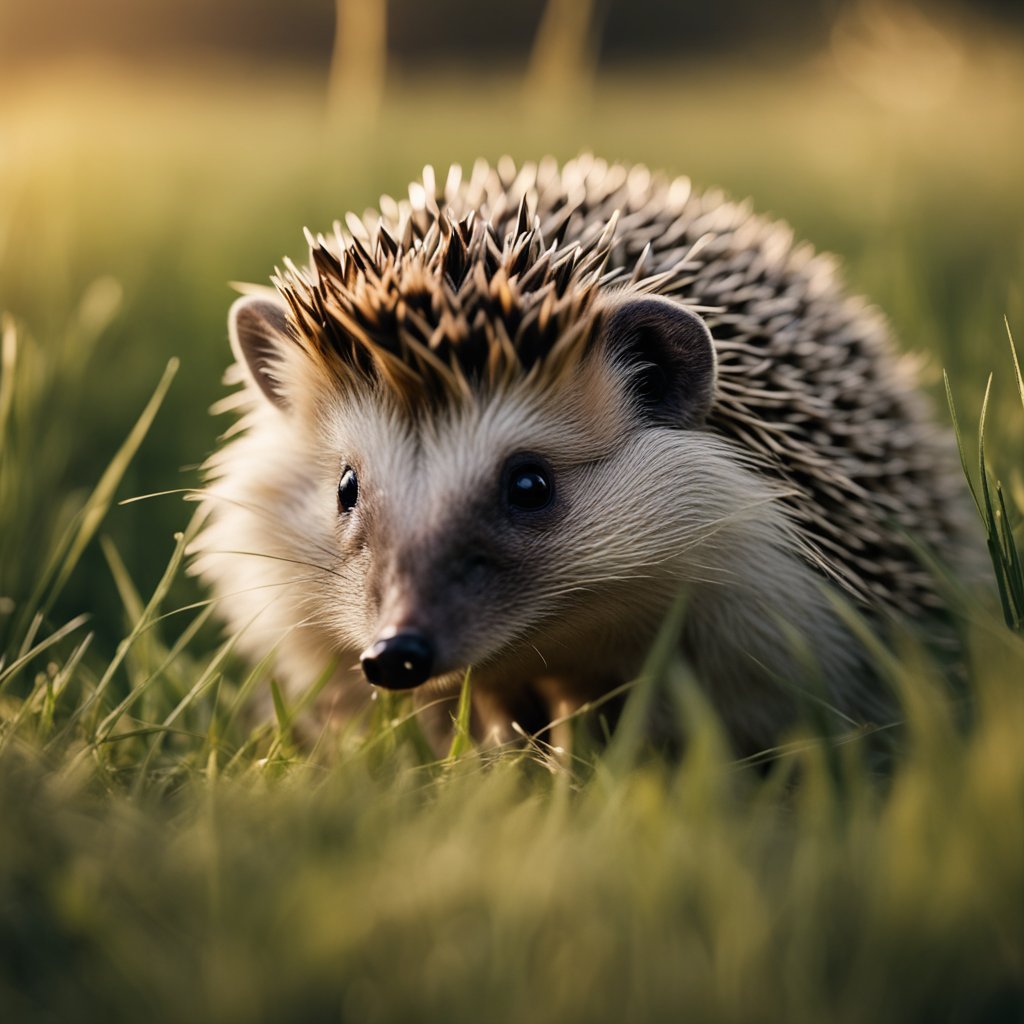Are Hedgehogs Spiky? Exploring the Physical Characteristics of Hedgehogs
Hedgehogs are small, adorable creatures that have become increasingly popular as pets. They are known for their unique appearance, particularly their spiky exterior. But just how spiky are hedgehogs? Are their quills sharp enough to hurt you? In this article, we’ll explore the spiky nature of hedgehogs and answer some common questions about these fascinating creatures.
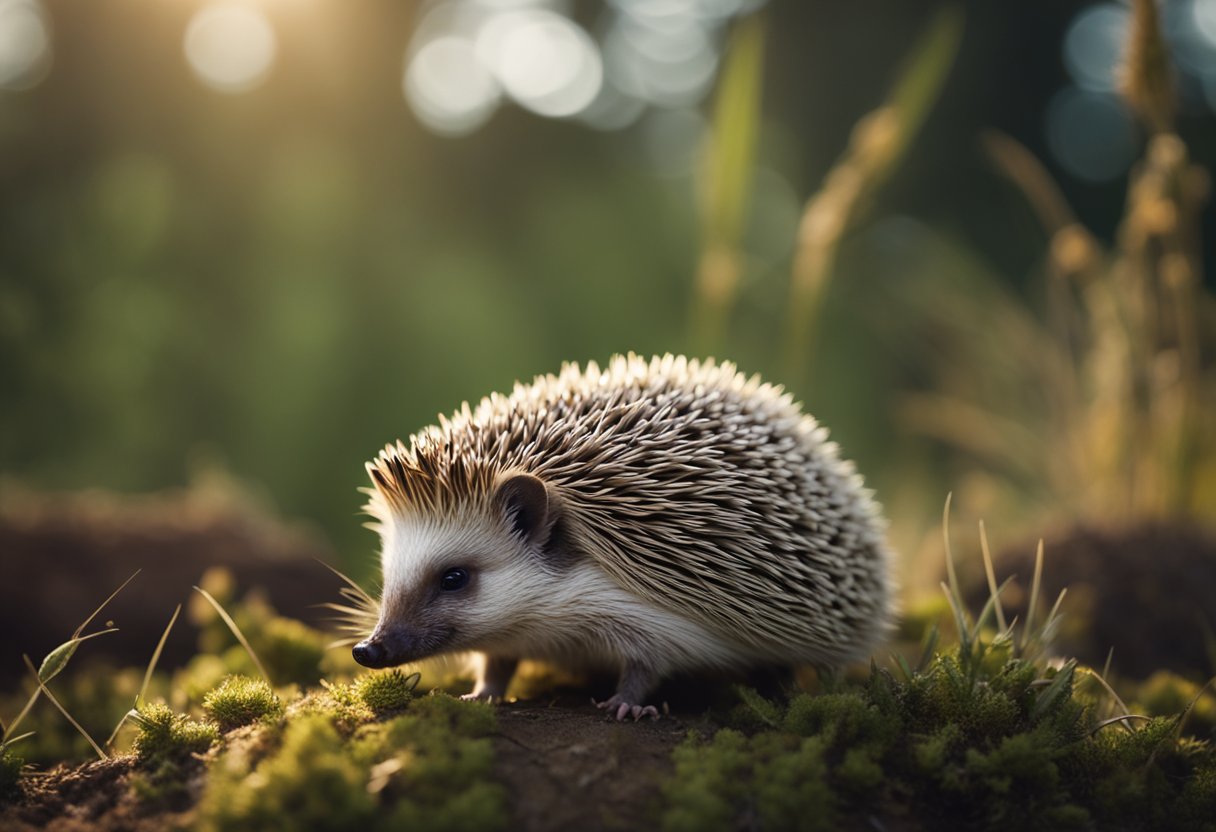
Hedgehog Anatomy: Hedgehogs are covered in approximately 3,000 to 5,000 quills, which are modified hairs made of keratin. These quills are sharp and stiff, and they can be raised to stand on end when a hedgehog feels threatened. While their quills may look intimidating, they are not barbed like a porcupine’s quills, so they are less likely to get stuck in your skin. However, if you’re not careful, you could still get poked by a hedgehog’s quills.
Hedgehog Defense Mechanisms: Hedgehogs use their spiky quills as a defense mechanism to protect themselves from predators. When threatened, they will curl up into a tight ball, with their quills facing outward to scare off potential attackers. This protective behavior is very effective, and it’s one of the reasons why hedgehogs have survived for millions of years. However, it’s important to note that not all hedgehogs will exhibit this behavior when they feel threatened. Some may run away, hiss, or even bite if they feel threatened or scared.
Key Takeaways
- Hedgehogs are covered in sharp, stiff quills that can be raised to stand on end when they feel threatened.
- Hedgehogs use their spiky quills as a defense mechanism to protect themselves from predators.
- While hedgehogs are generally not aggressive, it’s important to approach them with caution and respect their boundaries.
Hedgehog Anatomy
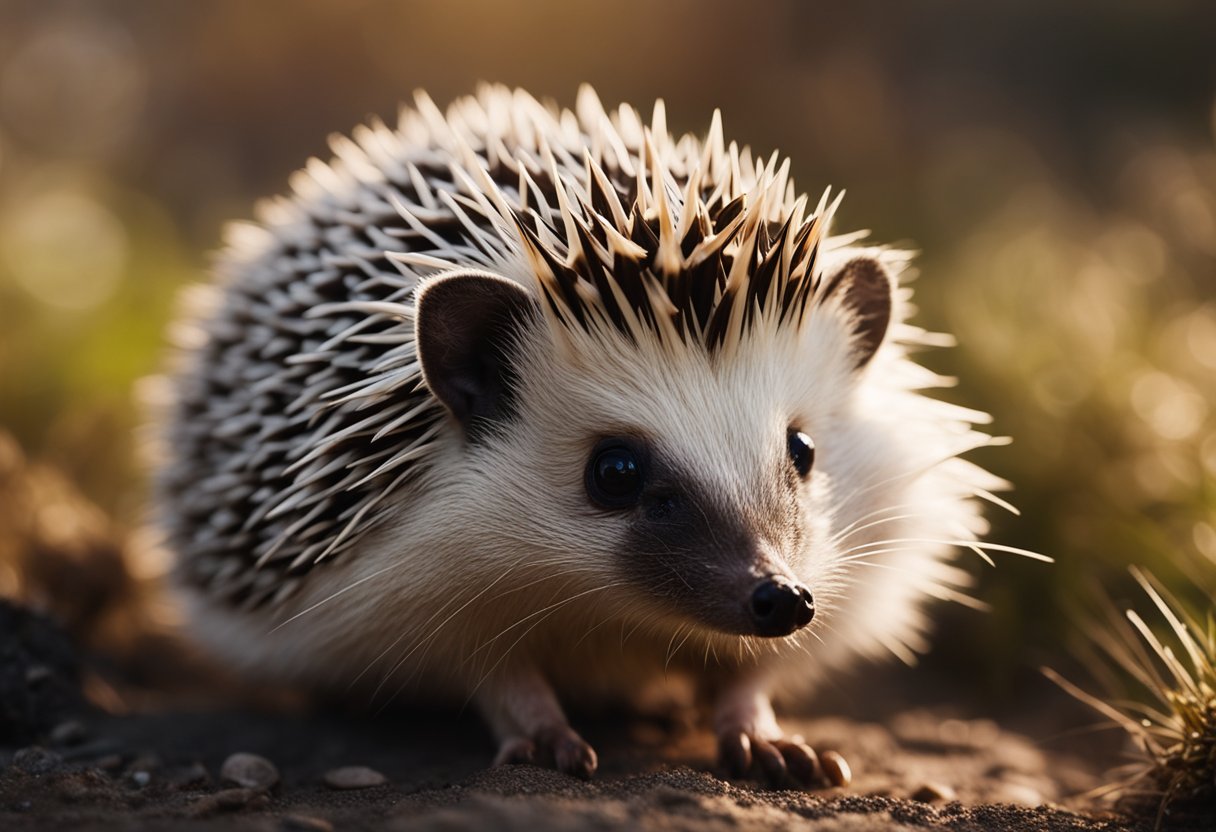
Hedgehogs are small mammals that are known for their spiky appearance. They have a unique anatomy that allows them to protect themselves from predators. In this section, you will learn about the anatomy of hedgehogs, including their spines and skin.
Spines and Their Structure
The most notable feature of hedgehogs is their spines. Hedgehogs have thousands of spines on their backs that they use for protection. These spines are made of keratin, the same material that makes up human hair and nails. The spines are hollow, which makes them lightweight and easy for hedgehogs to carry around.
The spines are attached to muscles that allow hedgehogs to raise and lower them as needed. When a hedgehog is threatened, it will curl up into a ball, exposing only its spines to the predator. This makes it difficult for the predator to attack the hedgehog.
Skin and Spine Flexibility
Hedgehogs have a thick layer of skin that protects them from the spines. The skin is tough and leathery, which allows it to withstand the sharp points of the spines.
The skin is also flexible, which allows hedgehogs to curl up into a ball without injuring themselves. When a hedgehog curls up, its skin stretches to accommodate the spines, which prevents them from piercing the skin.
In conclusion, hedgehogs have a unique anatomy that allows them to protect themselves from predators. Their spines are made of keratin and are attached to muscles that allow hedgehogs to raise and lower them as needed. Hedgehogs also have a thick layer of skin that is tough and flexible, which protects them from the spines.
Hedgehog Defense Mechanisms
Hedgehogs are known for their spiky appearance, but their spines are more than just a cute feature. They serve as a means of defense against predators. In this section, we will explore the two main defense mechanisms that hedgehogs use to protect themselves.
Spine Erection Response
When a hedgehog senses danger, it can activate its spine erection response. This response causes the muscles around the base of the spines to contract, causing the spines to stand up and become more rigid. This makes it more difficult for predators to attack the hedgehog without getting pricked by the sharp spines.
Curling Into a Ball
Another defense mechanism that hedgehogs use is curling into a ball. When a hedgehog curls into a ball, it tucks its head and legs in and rolls into a tight ball. This makes it difficult for predators to attack the hedgehog without getting pricked by the spines. The hedgehog’s spines also become more effective when it is curled up, as they cover more of the hedgehog’s body.
In addition to these two main defense mechanisms, hedgehogs can also use their spines to protect themselves when they are not curled up. When they sense a threat nearby, their quills will bristle and interlock with one another, providing a sharp shield of armor that works well to protect themselves from predators.
Overall, hedgehogs have several effective defense mechanisms that help them protect themselves from predators.
Interaction with Hedgehogs
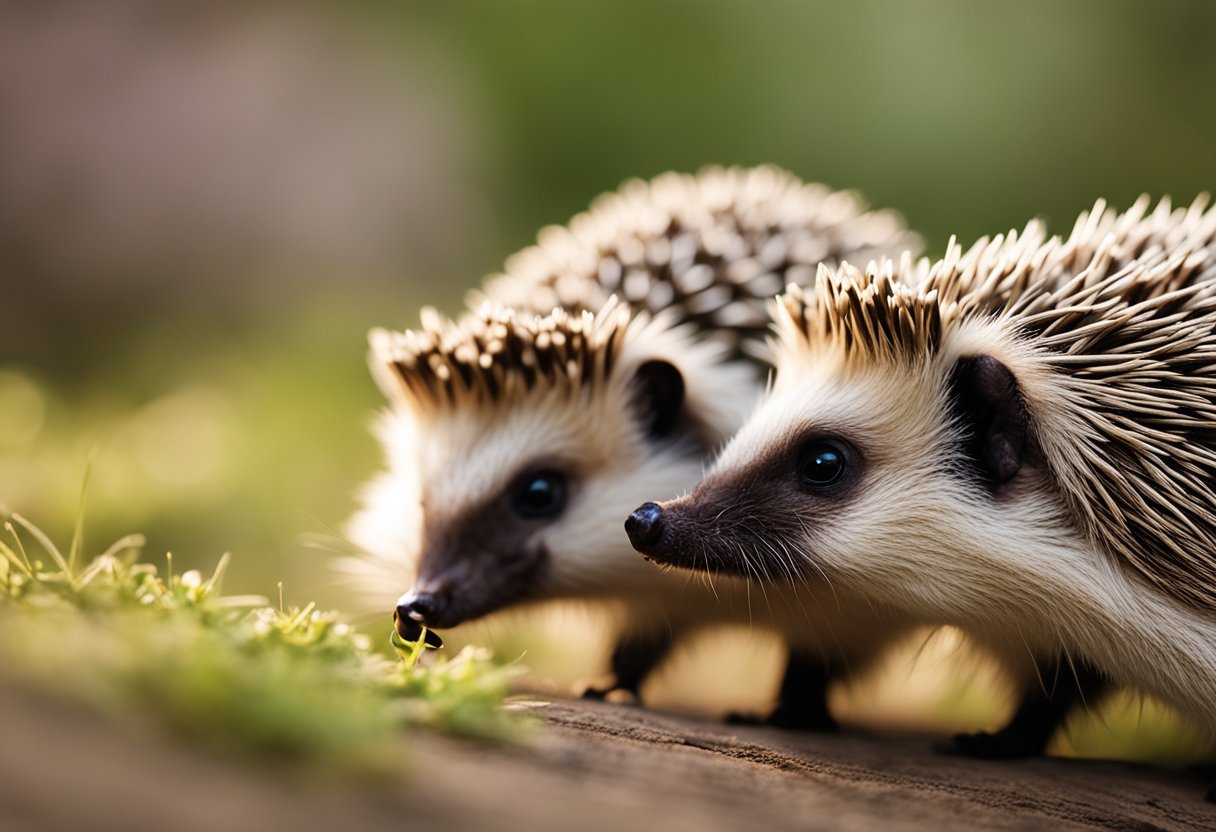
Hedgehogs are known for their spiky appearance, but they can make great pets for those who are willing to put in the effort to care for them properly. When interacting with hedgehogs, it’s important to take a few precautions to ensure their safety and well-being.
Handling Precautions
When handling a hedgehog, it’s important to be gentle and avoid squeezing them too tightly. Their quills can be sharp, so it’s also important to handle them carefully to avoid getting poked. If a hedgehog is feeling threatened or scared, they may curl up into a ball and expose their quills as a defense mechanism. In this case, it’s best to give them some space and wait for them to calm down before attempting to handle them again.
It’s also important to wash your hands before and after handling a hedgehog to prevent the spread of germs. Hedgehogs can carry salmonella, so it’s important to be cautious and practice good hygiene when interacting with them.
Domestic Hedgehog Care
If you’re considering getting a hedgehog as a pet, it’s important to do your research and learn about their care requirements. Domestic hedgehogs require a balanced diet that includes a mix of protein, fat, and fiber. They also need a clean and comfortable living environment, which should include a cage with plenty of space to move around and play.
In addition to providing proper nutrition and housing, it’s important to socialize with your hedgehog regularly to build trust and strengthen your bond. This can include spending time with them, playing with them, and handling them gently.
Overall, hedgehogs can make great pets for those who are willing to put in the effort to care for them properly. By taking the necessary precautions and providing proper care, you can enjoy a happy and healthy relationship with your spiky companion.
Resources

When researching hedgehogs, it’s important to use reliable sources to ensure that the information you’re reading is accurate. Here are some resources that can help you learn more about hedgehogs:
- Fact Animal: This website provides 22 spiky hedgehog facts, including that hedgehogs have between 5,000-7,000 quills that are hollow on the inside, and that each quill lasts for about a year before it is replaced with another spike.
- TRVST: This website offers 14 hedgehog facts, including that hedgehogs have spiky armor made of keratin, the same protein found in human hair and nails.
- The Spruce Pets: This website provides information on how hedgehogs use their spikes as a defense mechanism and how many quills they have (approximately 3,000-5,000).
It’s important to note that while hedgehogs are indeed spiky, their quills are not as sharp as they may appear. In fact, when petted or handled correctly, hedgehogs can become comfortable with human touch and may even enjoy being held.
If you’re considering getting a hedgehog as a pet, it’s important to do your research and make sure you’re prepared to care for them properly. Some resources that can help you get started include the Hedgehog Welfare Society and Hedgehog Central. These websites offer information on hedgehog care, diet, behavior, and more.
Conclusion
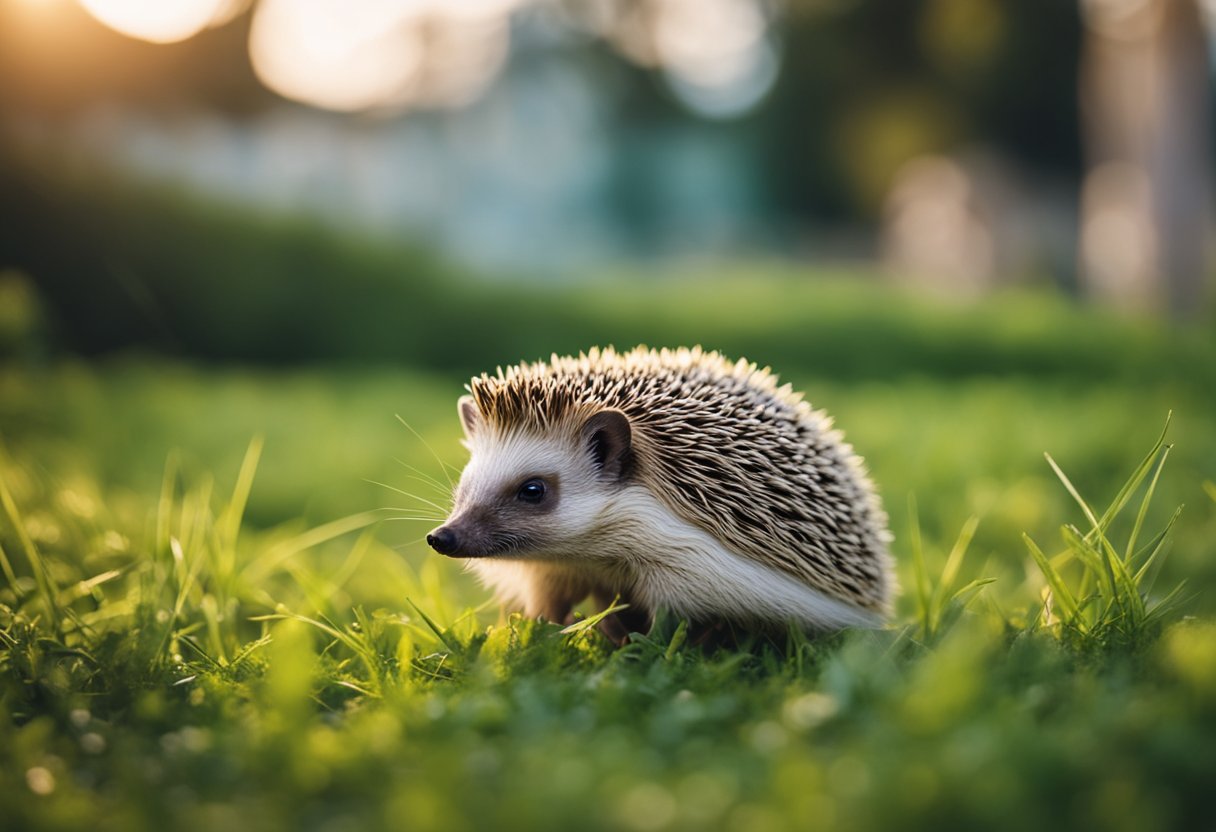
In conclusion, hedgehogs are spiky animals that have quills made of keratin, the same material that hair and nails are made of. These quills are not actually spines as they are not attached to the skeleton but rather to muscles. Hedgehogs are covered in these quills that serve as their primary defense mechanism against predators.
While hedgehogs may appear to be prickly and uncomfortable to touch, their quills are not actually sharp, but rather blunt and flexible. This allows them to curl up into a ball and protect themselves from predators without injuring themselves.
Hedgehogs are fascinating creatures with a unique set of characteristics. From their adorable appearance to their prickly quills, they are a joy to observe and learn about. Despite their spiky appearance, hedgehogs are surprisingly good swimmers and can cross small bodies of water when necessary.
Overall, hedgehogs are amazing animals that are well adapted to their environments. Their spiky quills serve as an important defense mechanism that allows them to survive in the wild. If you ever have the opportunity to observe a hedgehog in its natural habitat, take the time to appreciate its unique beauty and the important role it plays in the ecosystem.
Frequently Asked Questions
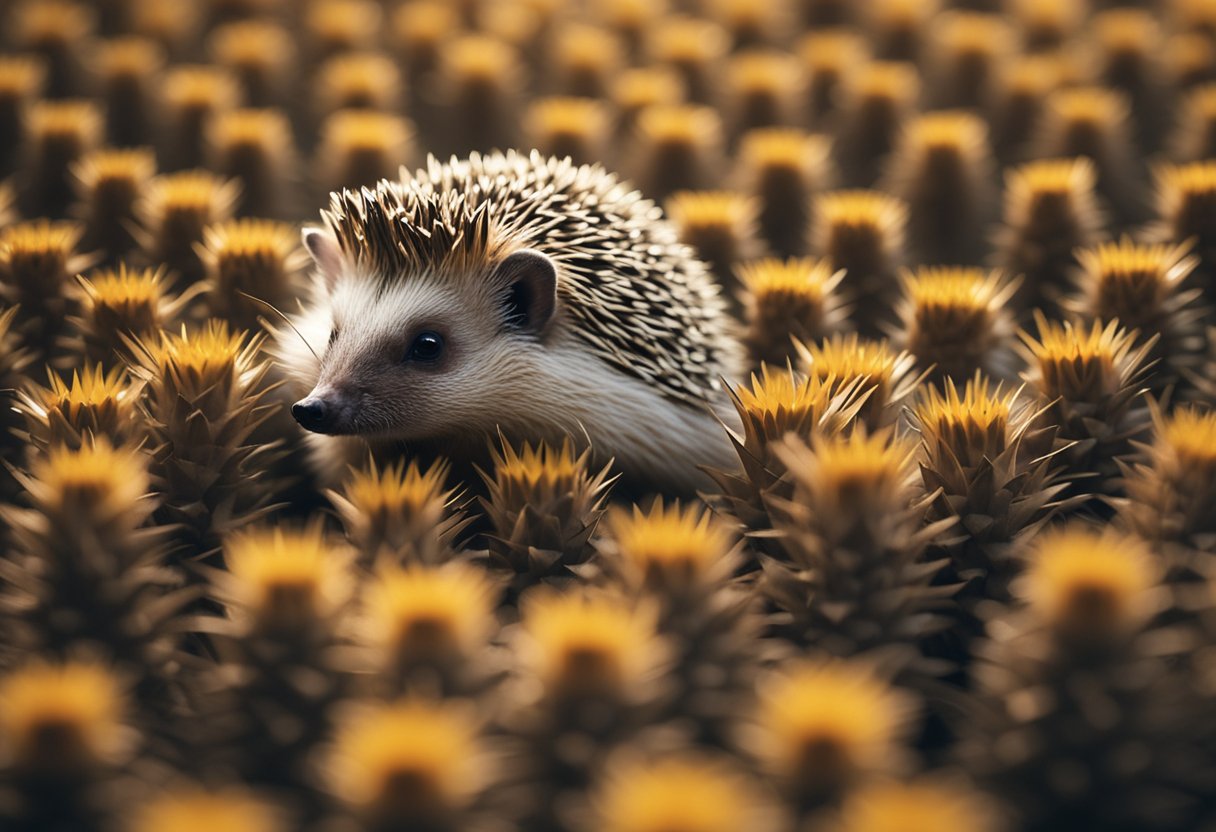
Can Hedgehog Spikes Hurt You?
Hedgehog spikes, also known as quills, serve as a form of protection rather than offense. These quills are not poisonous or barbed and do not cause any harm unless mishandled or grasped too tightly. While they may feel sharp to the touch, hedgehogs typically only extend their spines when feeling threatened. So, if you handle them gently and with care, you won’t feel any pain.
Are Hedgehogs Spiky Reddit?
Yes, hedgehogs are spiky. In fact, their spiky appearance is what makes them one of the most unique and recognizable animals in the world. The hedgehog’s spines are made of keratin, the same material that makes up human hair and nails. They are not sharp enough to cause any harm to humans, but they can be quite prickly to the touch.
Do Hedgehog Bites Hurt?
Hedgehogs are not aggressive animals and are unlikely to bite unless they feel threatened. However, if they do bite, it may cause some pain and discomfort, but it is not likely to cause any serious injury. It is important to approach hedgehogs with caution and handle them gently to avoid any potential bites.
Can Hedgehog Shoot Quills?
No, hedgehogs cannot shoot their quills. However, when threatened, they will curl into a ball and expose their spines as a defense mechanism. The quills are loosely attached and can easily detach from their skin, allowing them to stick to predators. The hedgehog can also make a hissing sound and click its tongue to warn predators to stay away.
How Do Baby Hedgehog Spines Compare to Adults?
Baby hedgehogs, also known as hoglets, are born with soft, flexible spines that are not yet fully developed. As they grow, their spines become larger, thicker, and sharper, finally becoming the distinctive spiky coat we identify with hedgehogs. Hedgehogs lose their spines regularly and sprout new ones to substitute for them, similar to how humans shed and renew hair.
Are Hedgehog Quills Poisonous?
No, hedgehog quills are not poisonous. However, it is important to wash your hands thoroughly after handling a hedgehog, as they can carry bacteria that can cause illness. It is also important to keep in mind that hedgehogs are wild animals and may carry diseases that can be transmitted to humans. Therefore, it is recommended to handle them with gloves and wash your hands thoroughly after handling them.
See also : What Do Hedgehogs Eat
